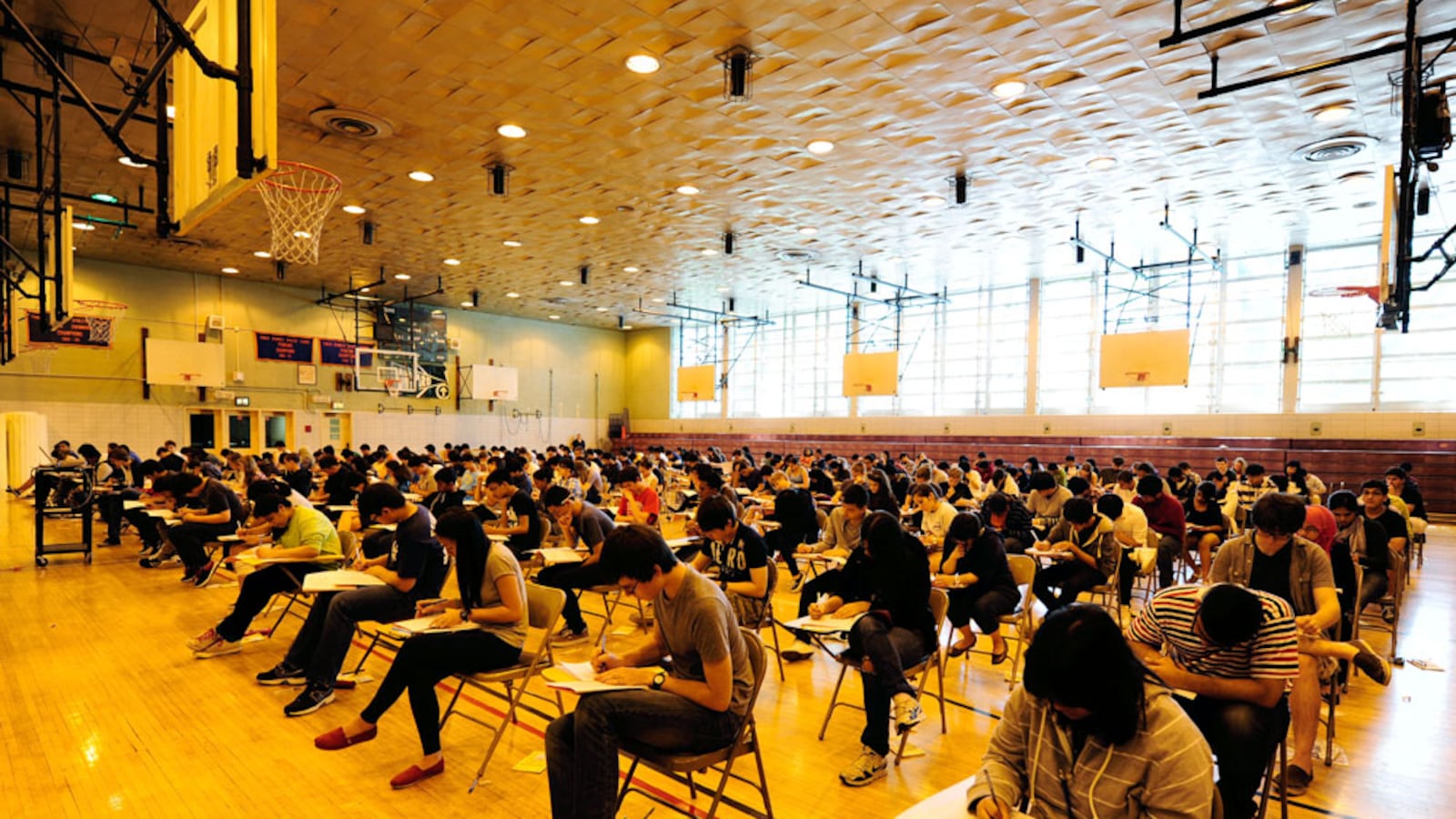A program intended to diversify the city’s elite specialized high schools continues to help far more white and Asian students than black and Hispanic ones, according to new data released Tuesday.
The initiative, known as the Discovery program, aims to promote diversity at the eight elite high schools by offering admission to students from high-need families who score just below the entrance exam cutoff if they successfully complete summer coursework.
This year, Asian students represented 64 percent of students admitted through Discovery, (despite being 16 percent of the city’s students), while black and Hispanic students combined make up just 22 percent (a group that represents nearly 70 percent of the city’s students). Last year, 67 percent of students admitted through Discovery were Asian and 18-20 percent were black or Hispanic.
And while black and Hispanic students get more offers through Discovery than they do in the typical admissions process — where just 10.4 percent of offers went to black and Hispanic students this year — the program does not make a big difference because such a small share students actually get admitted through Discovery. This year, 6 percent of ninth graders were admitted through the program.
Discovery has expanded under Mayor Bill de Blasio, from 58 students in 2014 to an expected 250 this coming school year. But despite the program’s growth, it has had little effect on making the city’s elite high schools more racially representative of the city’s overall student population.
The preliminary numbers released Tuesday help show why the city is changing the program.
After years of these meager results, the city is expanding the program even further and tweaking its rules to include more black and Hispanic students — a key pillar of de Blasio’s controversial plan to make the schools more racially representative of the city’s students.
By 2020, each of the specialized schools that determine admission based solely on a single exam will be required to reserve 20 percent of their seats for students in the Discovery program. (Stuyvesant High School, which is participating in the program for the first time this year, admitted 23 students through Discovery. Under the mayor’s plan, the school will have to increase that number sevenfold.)
To ensure it helps more black and Hispanic students than it does right now, the program will be restricted to students at high-poverty schools, which tend to enroll more black and Hispanic students. (Currently, the program is only restricted to high-need students from any middle school in the city.)
By itself, that change is expected to have only a modest effect, increasing black and Hispanic student enrollment to 16 percent, up from about 9 percent today. But unlike the mayor’s plan to get rid of the entrance exam entirely, which would have a more dramatic effect on diversifying the schools, expanding the Discovery program is something de Blasio can do without approval from the state legislature.
“By changing the Discovery eligibility criteria starting next year, we’ll support greater geographic, racial, and socioeconomic diversity at our specialized high schools,” education department spokesman Will Mantell wrote in an email.

